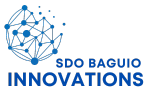Project BRIDGE: Blended Resilient Instruction for Distance and General Education
Jackson Caya-os
School Head
Proponent
The Problem
The innovation seeks to address the issue of long time classroom shortage aggravated by the demolition and ongoing construction of school buildings.
By implementing Blended Learning, (face to face, distance Learning through online synchronous and asynchronous and hybrid sessions), the project provides a flexible alternative that ensures continuous, high-quality education despite classroom limitations.
The Context
At present, the school has a shortage of 31 classrooms.This is due to ongoing construction or restoration of two (2) school buildings.
With the current classroom shortage affecting all grade levels, our school must adopt innovative methods to ensure uninterrupted and high-quality instruction for our learners.
Implementing Blended Learning through face to face and online synchronous sessions offers a flexible alternative that addresses the space limitations while maintaining interactive engagement between teachers and students.
By supplementing this approach with asynchronous modalities and learning activity sheets, we provide learners with a comprehensive educational experience that accommodates varying access to technology and learning paces.
This blended model not only mitigates the impact of the physical classroom shortage but also adopts a more adaptable and resilient learning environment.
Stakeholders Pain Points
LEARNERS
Lack of focus
Lack of engagement
Irregular attendance
TEACHERS
Using the covered court as learning spaces – Not conducive to learning
Insufficient time for instruction
PARENTS
Difficulty of parents in assisting their children in their homework
BARANGAY OFFICIALS
The Barangay Officials are willing to assist in the school but lack time and manpower.
The Solution
Unlike traditional approaches that rely solely on physical classrooms, this project embraces Blended Learning, a combination of face to face, distance Learning and hybrid models as adaptive solutions to address ongoing classroom shortages.
By integrating online synchronous sessions and asynchronous learning with activity sheets, the school ensures uninterrupted education even amid construction disruptions.
Maximizing Learning Opportunities: In the morning, the first half of each grade level (approximately 5 classes) can engage in F2F instruction, utilizing available classrooms.
Simultaneously, the remaining 2 or 3 subjects can be delivered thru online synchronous and asynchronous, allowing students to learn independently. In the afternoon, the other half of each grade level can follow a similar pattern, ensuring that all subjects are covered effectively.
For the Phase 1 of the project, it will be implemented this school year 2024-2025, the focus is on Grade III and Grade IV levels only considering that the school has only 97 gadgets to be shared on a scheduled basis by the 210 learners who dont have gadgets in the grade levels mentioned.
Phase 2 will include Grade 5 and 6 to be implemented school year 2025-2026.
Sustainability Beyond the Short-Term:
The project is not merely a temporary fix; it is designed to become a regular feature of the school’s learning delivery system.
The blended model remains relevant even after construction is completed, addressing ongoing space limitations and preparing for future disruptions.
Inclusivity and Flexibility:
The project considers varying levels of access to technology and different learning paces, ensuring that all students—regardless of their circumstances—receive quality instruction.
This flexibility makes the project adaptable to diverse learning needs and contexts, enhancing its replicability in other schools.
Proactive Preparation for Future Challenges:
By institutionalizing this blended learning approach, the school is better prepared for future infrastructure-related issues.
This forward-thinking strategy sets a precedent for other schools facing similar challenges, making it an exemplary model worth emulating.
Image credit: Shutterstock
Challenges
- ICT Infrastructure.
- Teacher Training and Capacity Building
- Parental Support and Collaboration
Needed Resources
- ICT Infrastructure and Equipment
- Professional Development for Teachers
- Digital Learning Resources and Materials
- Parent Engagement and Support
Monitoring & Evaluation
The progress of the Blended Learning Modality at Baguio Central School will be monitored through a combination of regular data collection, feedback loops, and continuous assessment. The school will implement the following key strategies:
ØTeacher and Learner Performance Metrics:
ØParent and Stakeholder Feedback:
ØICT Infrastructure and Resource Usage Tracking:
ØProfessional Development and Training:
Indicators for Success:
ØImproved student performance and higher retention rates across all learning modalities.
ØHigh levels of teacher competence and confidence in delivering blended learning.
ØIncreased parental engagement and collaboration in supporting their child’s learning.
ØStable and reliable ICT infrastructure that supports uninterrupted learning.
ØSuccessful integration of blended learning as a regular, sustainable modality in the school’s overall education strategy.
Jackson Caya-os
School Head
Proponent





